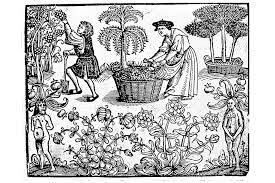Whether you are casting a simple spell, using items from your kitchen cupboard, or performing a
complicated group ceremony, the source of the power behind it is the same. Every spell or ritual
involves channelling the life force that runs through all forms of existence and transforming it into
higher spiritual energies. These spiritual powers include our own evolved self, which some say is
formed through many lifetimes, and the higher divine cosmic energies, such as a supreme god or
goddess, or, more abstractly, some sort of divine light, spirit and goodness.
Magick for healing, it must be said, is not so far removed from the prayers of conventional religions,
whose positive influence is well documented. The same effect can be created whatever the focus or
faith, and I know from personal experience that positive results can be achieved when a Wiccan coven
sends healing light to a sick member or a friend.
For hundreds of years, angels have been invoked in magick, just as in religion, both for protection and
to act as vehicles for healing or positive energies. Practitioners of white magick may focus on
particular aspects of a god or goddess figure, or benign power, personified through different deities
from many age and cultures.
Most rituals are related to the basic human needs for health, love, fertility and prosperity. In Chapter
13, Seasons and Festivals, I describe the major solar, lunar and agricultural festivals that formed a
focus for attracting abundance and increase to the land, animals, crops and people, tapping into the
life force that connected them all.
In past time, the well-being of the planet was considered to be the responsibility of peasant as well as
king through paying tributes and enacting age-old ceremonies to invoke the necessary energies for the
Wheel of the Year to turn. So individual prosperity or fertility was attained both through private spells
and charms and by sending positive energies to the Earth and the cosmos and, in a sense, receiving
bounty as those beams were amplified and returned to the sender.
Folk or domestic magick was an important part of people’s everyday lives right up until the nineteenth
century. In rural areas, the implements used in and around the home and garden could be easily
adapted for use in magick; and for town-dwellers, flowers and herbs could be gathered on a day in the
country or grown on allotments or in urban back gardens.
In the days before central heating systems, the focus of the home was the family hearth. Focus is Latin
for ‘hearth’ and from Ancient Rome to China, the household deities have always had their place, being
offered morsels of food, nectar and flowers and consulted on family happenings.
It was believed that the ancestors as well as the living gathered around the family hearth, and so it
became a natural focus for magick. The witches’ cauldron started off as the iron cooking pot that hung
over the fire (such pots are still used in country regions of Europe – I saw one for sale quite recently in
the market in Rouen in France).
Herbal brews were not only created to cure coughs and colds but also, with magical words spoken
over them, transformed into potions to bring a desired lover, employment or an unexpected helping
hand in times of sorrow. A grandmother would put any small coins she could spare into a money pot
and warm it near the fire to ‘incubate’ the money into sufficient to mend the roof or buy new coats for
the winter.
A young wife eager to be pregnant would secretly prick a fertilised hen’s egg with a needle on the
night of the full moon immediately before making love. Such actions were quite a normal part of life,
a way of tapping into the same energies that made the cattle fertile and the corn set seed.
Farmers would leave milk for the faeries that they might bring good fortune, young girls recited love
charms while planting herbs in soil embedded with a would-be lover’s footprint. On Hallowe’en,
housewives opened their windows and placed garlic on the window ledge so that only the good family
dead might enter and take shelter from the cold.
This simple folk magick, rather than ceremonial magick, forms the basis for the majority of spells. As
above, so below’, the words of the semi-divine father of magick, Hermes Trismegistos, may originally
have evolved from popular magick that is practised in many different cultures around the world to this
day. They are certainly as applicable today as they ever were.
Whatever the aim of your magick may be, if you look around your home, garden, workshop or even
office, you have the necessary tools for the spells you require. What is more, rooted as they are in
domesticity and the daily world, these implements could not be safer: fruit, vegetables, salt, sand,
seeds, flowers, coins, pots and jars, together with your crystals, candles, incense and oils, and perhaps
a few coloured scarves or ribbons to tie knots. Whether your spell is small and personal, or vast and
universal, whether you are working to attract love, harmony in the home, prosperity or fertility for
yourself or loved ones, for people in the wider environment or the planet, these are all you need.

